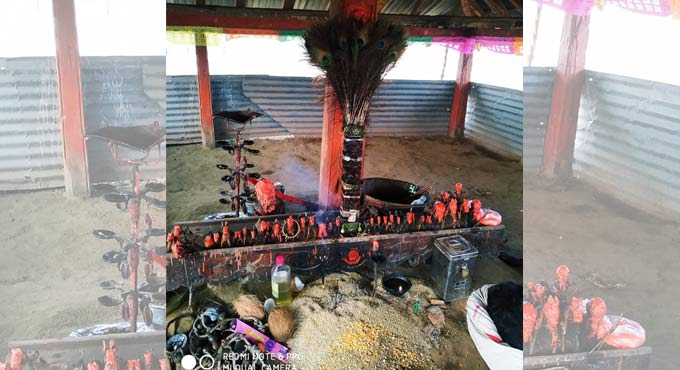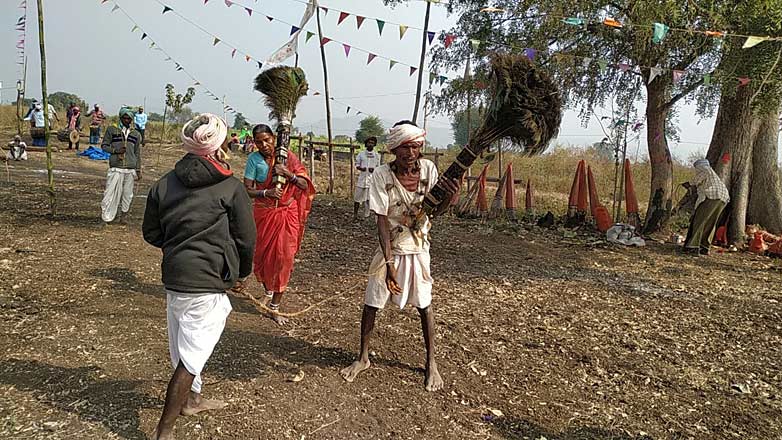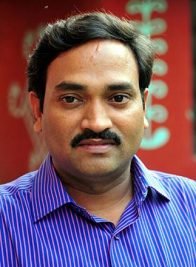The people of Telangana treat Satti, the season before Sankranti, as precious. The tribal communities too believe in it and celebrate a colourful community fest for five days in the remote forest clad hills of the erstwhile district of Adilabad. It is an age old traditional fair – Deyyal Mokkikad (worship of deities) during which the tribal Kolams of several villages come together to travel, pray, feast and dance together in the name of God to whom they introduce their newlywed couples and newborns as a compulsory custom.
The Kolams belonging to various clans or phratries hold the fair of five days to their deities (Deyyal) as the following, to get rid of problems and to beget children/crops and other boons.
Poth-raju or Gangaraj Bheemayak or Dantanpalli Bheemayak or Sirsigam Bheemayak in the form of tiger – worshipped by Athram clan.
Gubur Ayyak in the form of stone in bushes located at Kaplai cave on the borders of Telangana with Maharashtra – worshipped by Sidam clan. Rajul Ayyak in the form of erect stones – worshipped by all the clans.
Welcoming the deities
Every Kolam settlement of considerably large size or a group of three to four Kolam hamlets have a shrine of the deity at their village boundaries or at a crossroads outside their settlements. It is said that the soopari (clan priest) would be ordered by deities in his dreams as to when to hold the fair of Deyya Mokkikad. Accordingly he announces the dates of the fair and informs his clan to accompany him to the deities consecrated in the tikaans (shrines).
The soopari and the villagers bring the deities and the associated sacred things to their village and place them next to the Goddess Nadidamma at the village centre. The deity is normally Lord Bheemayak in the form of a quadrangular wooden shaft that is two feet long. It is crowned with peacock feathers and is called ‘Bheemayak gaja’.
The villagers worship such deities for two days. The gajas develop dirt on them due to smearing of sesame oil and sendur the previous year. During these days, the soopari cleans this dirt with a sacred knife rusi until the line drawings on the outer faces of the shafts are revealed. Half of the dirt is kept at a place called Deyyal Moola (deities’ corner) and the remaining half is carried together with the deities to Ganga / sacred water source and sprinkled into the water.
Travelling together
On the third day, the villagers shift the ‘Bheemayak gajas’ and the other associated sacred things into baskets and travel barefoot to the river Ganga. They call a river or stream or an untouched water pond/source as Ganga. Soopari reveals the specific water source where to carry the deity. The water source may vary from year to year depending upon its sanctity. It should not be touched by menstruating women.
Since the travel takes at least two days, the Kolams carry necessary things in bullock carts. While travelling towards the Ganga, the Kolams make a rhythmic noise by playing the ‘thudum’. In response to the sounds the soopari carrying the deities may get into a trance and run to the place of another deity in the village en-route. He speaks to the deity and if both the deities decide, the travelling Kolams stay there for the night. If the Kolams of other villages join the initial villagers they will be cleansed with paalgomthri (cow urine) before allowing them.
Bathing together
Having reached the river Ganga i.e. Godavari or other water sources, the Kolams seek the permission of the water deities – Eera Kanik (water queens) and Eera Maas (water kings) – before entering the water. Once the soopari mystically receives a nod from the deities, he sprinkles ‘daari belli’ (jaggery mix of pulses) into the water. It is considered to be sacred and precious and hence it is believed that souls of the deceased persons and other spirits would possess some persons in the gathering and neck for the ‘daari belli’. Once the ‘daari belli’ episode is over, the soopari enters the water followed by others. The soopari cleans the Bheemayak gajas with a bamboo brush.
Thereafter, the ‘Bheemayak gajas’ and other associated things will be placed on the bank of the river or pond. The soopari then applies sesame oil and sendur to the gajas and other sacred things and places them on a heap of millets. He kindles dhoop (sticks) and sesame oil lamp in front of the deities.
Invoking together
Meanwhile a few persons play the sacred drums – Deyyam Dol and Thudum. Slowly the soopari gets into a trance, picks up saatl (whips) and leaves the deities for distributing them to married men standing in a circle. The soopari then walks in the inner circle going closer to each of the men while shouting words invoking all the Gods – Bheemayakun ko, Pot-raju ayyakun ko, Muthalayan ko, Perayakun ko, Rajul ko, Chinnayen ko, Chilukayakun ko, Kadagottayyen ko, Kolaadi ayyakun ko, Nagrayyakun ko, Pallayyan ko, Meripelayyakun ko, Srisigamayakun ko, Mavaramayyen ko, Patte namman ko, etc. Thus the soopari takes about seven rounds (chutora) while the men hit him with the saatl. He then takes back the whips from them but remains in the same state of trance for some time.
(The Kolam fair Deyyal Mokkikad is being held from January 1-5)
(The author is a Telangana Historian)
Now you can get handpicked stories from Telangana Today on Telegram everyday. Click the link to subscribe.
Click to follow Telangana Today Facebook page and Twitter .


